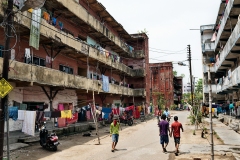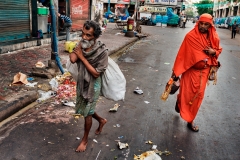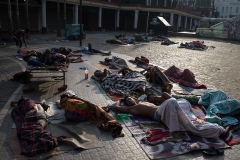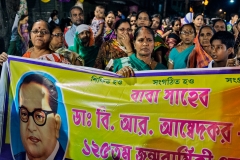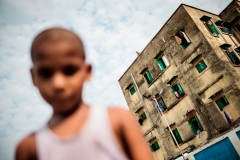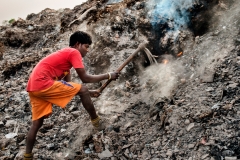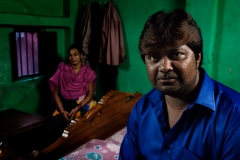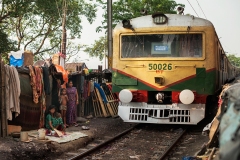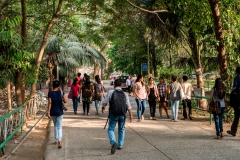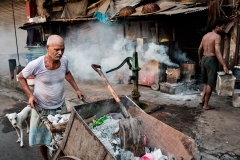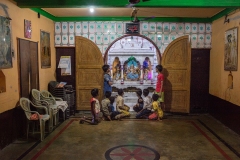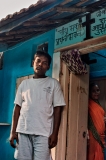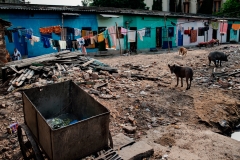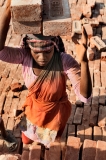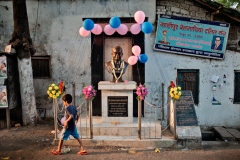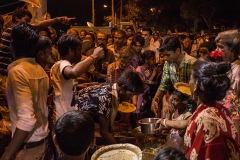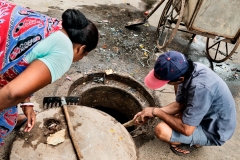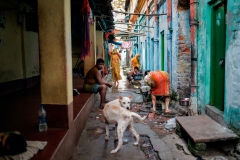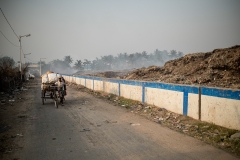Painful Universe of Dalit. Kolkata, India
The caste system in India, strictly based on heredity, constitutes for thousands of years the foundation of the Hindu society. Castes – based on the concept that persons are not equal- were formally abolished by the constitution of 1950, yet continue to regulate de facto the lives of hundreds of millions of Indians. At the margins of the four official castes, those of the Brahmins, the priests, those of warriors and nobles, those of merchants and craftsmen and those of laborers and artisans, the dark and suffering universe of the ‘untouchables’ begins. 180 million people in India alone, of which around 800 thousand in Kolkata, are genetically doomed to a life of suffering and humiliation.
They are relegated by their status to carry out the jobs that Hindus consider unclean and contaminating. Processing of animal skins, garbage collection, maintenance of sewers, handling dead bodies in the crematories or hospitals, are jobs that in India only ‘Dalits’, – oppressed, as the untouchables call themselves- can do. A condition of painful social subjugation that, over the centuries, has exposed them, and still exposes them to violence and abuse of all kinds, usually without the authorities, except in special cases, giving them any help. The case of the two teenagers raped and hanged some years ago in a poor village in Uttar Pradesh makes no exception. Many Dalits are killed or seriously injured every year, especially in the countryside, where 70 % of the Indian population lives, often only for breaking the harsh social segregation rules to which they are subjected.
Great metropolis, especially Mumbai, New Delhi and Kolkata, represent a “refuge” for the untouchables, somehow protected and camouflaged by the multitudes of people who live there. In Kolkata, in the state of West Bengal, Dalits live in dilapidated popular neighborhoods that the government has assigned for them. Alternatively, they live in unhealthy slums, where even running water in the house can be an unattainable luxury. In the city you find them in the streets or in large landfills to collect garbage on behalf of the government, which is a degraded form of employment. They are found in the medieval “brick factory” as well, many of which are located along the banks of the Ganges in the outskirts of the city. They work in tanneries breathing pestilential stench of leather, or, with more dignity, in laboratories that produce low-cost footwear. They are employed in activities such as the cremation of bodies itself, or in their management of these within hospitals and morgues.
Despite some parties that represent them, as well as some associations that aim at promoting their social redemption, the Dalits rarely get to occupy important posts in the public service sector, where the most influential positions have always been occupied by members of the upper castes. This is a social anomaly of extraordinary dimensions, that no one in India, including Gandhi, has ever really tried to heal. The ruthless rigidity of the caste system is in fact in the Hindu society a powerful factor of stability which no “traditional” politician seems to want to give up. The Dalits are in fact alone in their struggle for liberation, but by no means did they decide to give up.
See my photo project: “Desperate Village. Crematorium Slum. Kolkata, India”: https://www.robertonistri.com/painful-universe-of-dalit-kolkata-india/

